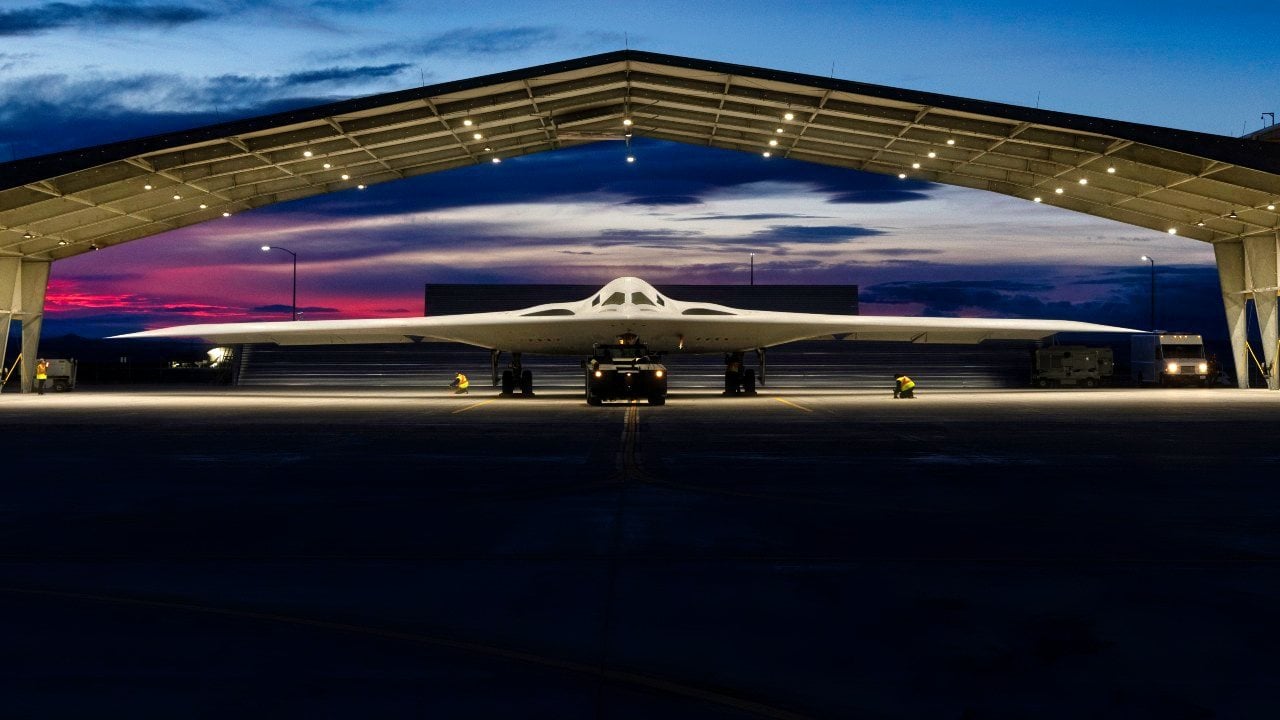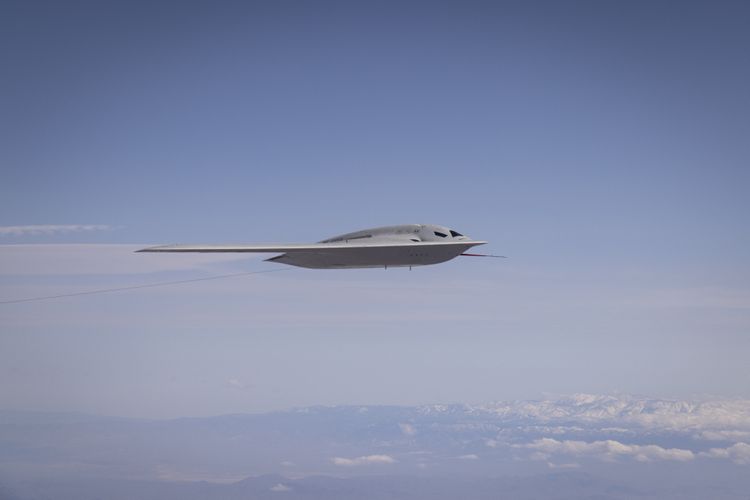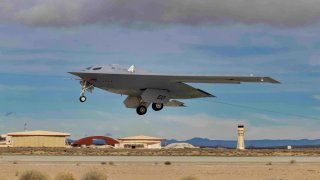Breathtaking: New Photos of Air Force B-21 Raider Bomber Just Dropped
New photos of the B-21 Raider have been released, offering limited insights into the stealth bomber's design.
Summary: New photos of the B-21 Raider have been released, offering limited insights into the stealth bomber's design. See the image above and the two just below.

-The images reveal a narrow, 2-D exhaust and an auxiliary air inlet, suggesting efforts to reduce its infrared signature and improve stealth.
-The B-21 also features retractable navigation lights to maintain its low visibility.

-The Air Force remains secretive about the testing program, which is progressing well and highlighting the bomber's unique characteristics.
-The B-21 is expected to be a digital-heavy platform, aligning with modern aircraft trends.
New B-21 Raider Photos Reveal Stealth Enhancements and Design Details
New photos have emerged of the B-21 Raider, giving the public some insight into a secretive U.S. Air Force program.
Designed as a stealth bomber to replace the aging B-2 fleet, the B-21 is currently undergoing early phase testing with the hopes that the airframe will one day become the foundation of the U.S. bomber fleet. But the general public still doesn’t know very much about the project.
Let’s take a closer look at the new pictures.
A Picture Tells a Few Words, at Least
So far, the Air Force has released three images of the B-21. Two of the pictures show the bomber’s left profile while in flight – the first is during a takeoff, the second is at altitude. The third photo is a face-to-face shot taken inside the bomber’s hangar at Edwards Air Force Base. Northrop Grumman, the B-21’s manufacturer, released one photo of the bomber in flight from the right profile.
In aggregate, the “images offer only slightly more information about the aircraft than could be gleaned from unofficial photos taken of the first flight and circulated on the internet,” Air and Space Force Magazine reported.
The images show that the B-21 has a “very narrow, 2-D exhaust embedded in the jet’s tail,” which is distinct from the B-2’s “boxy, sugar-scoop exhaust.” The modified exhaust shape on the B-21 could indicate Northrop spent “more attention to fanning out the aircraft’s heat to reduce its infrared signature, as well as keep its profile slim to defeat radar.”
Some blackening around the exhaust also inspired speculation. The blackening could just be a result of the airframe having not flown much, but it could also indicate that the exhaust heat is cooled internally before being discharged from the engine. The F-117 and B-2 (both stealth aircraft) cooled exhaust heat with panels that captured the heat and released it slowly.
The B-21 pictures also show an auxiliary air inlet, which can be “opened above the engines to provide them with more air as the jet rotates its nose up,” Air and Space Force Magazine reported.
This is necessary because of the top-mounted main air intakes, which would receive reduced air at high angle of attack.” A similar auxiliary air inlet is used on the B-2.
To make the B-21 as stealthy as possible, the navigation lights are retractable. These lights, which are mandatory in ATC-controlled airspace, can pop up from the fuselage or wing when needed but otherwise are kept retracted to reduce the bomber’s stealth signature.
While the photos are appreciated, the public still doesn’t have very much to go on. Understandably, the Air Force is disclosing next to nothing about the B-21’s test flights.
The testing program “is proceeding well,” said Air Force acquisition executive Andrew Hunter. “It is doing what flight test programs are designed to do, which is helping us learn about the unique characteristics of this platform, but in a very, very effective way.” Hunter also confirmed that the B-21 is “more digital than not,” as seems to be the trend with new aircraft.
Keep an eye out for more pictures, and more insights, into the B-21 in the coming months.
About the Author: Harrison Kass
Harrison Kass is a defense and national security writer with over 1,000 total pieces on issues involving global affairs. An attorney, pilot, guitarist, and minor pro hockey player, Harrison joined the US Air Force as a Pilot Trainee but was medically discharged. Harrison holds a BA from Lake Forest College, a JD from the University of Oregon, and an MA from New York University. Harrison listens to Dokken.
All images are Creative Commons.


